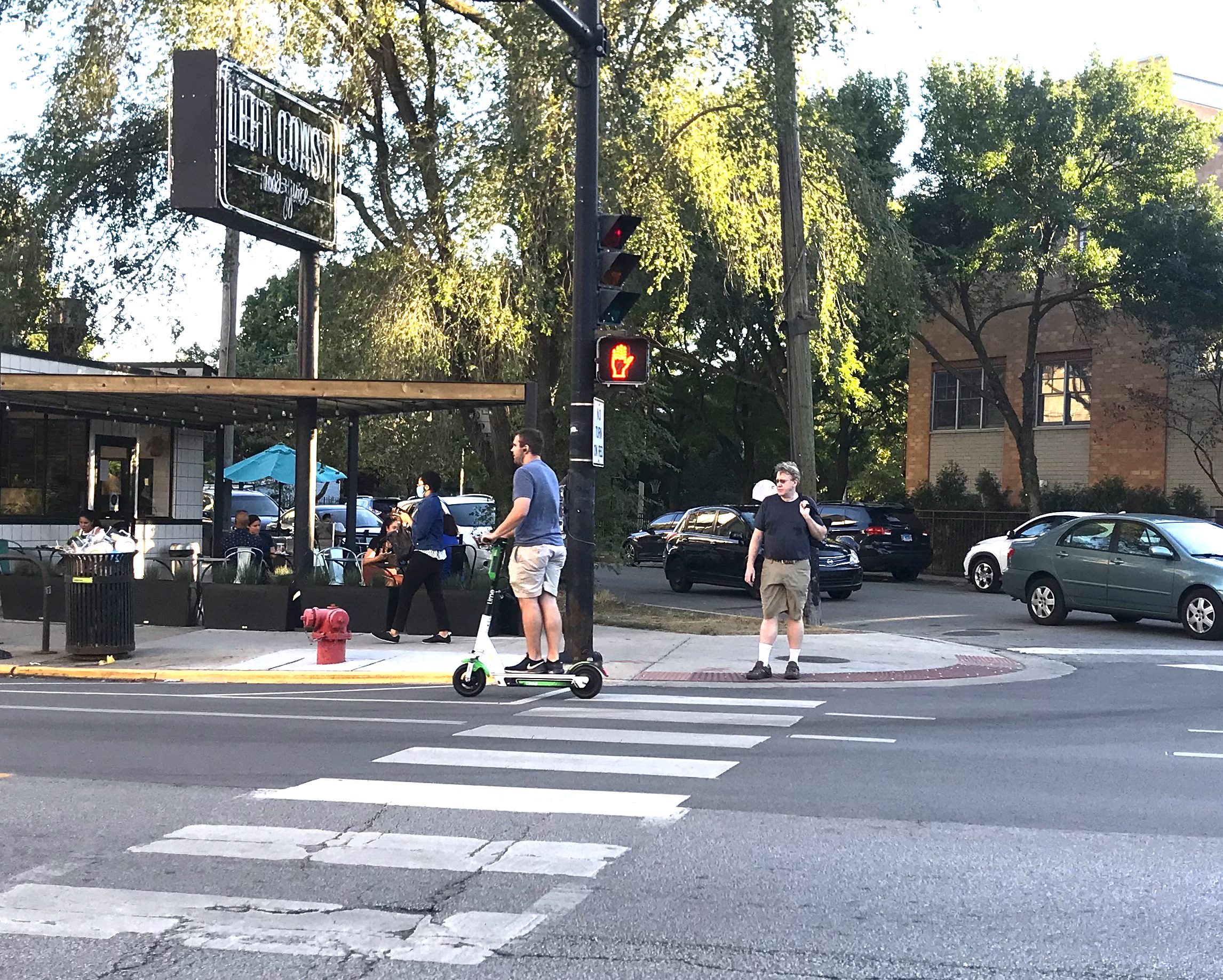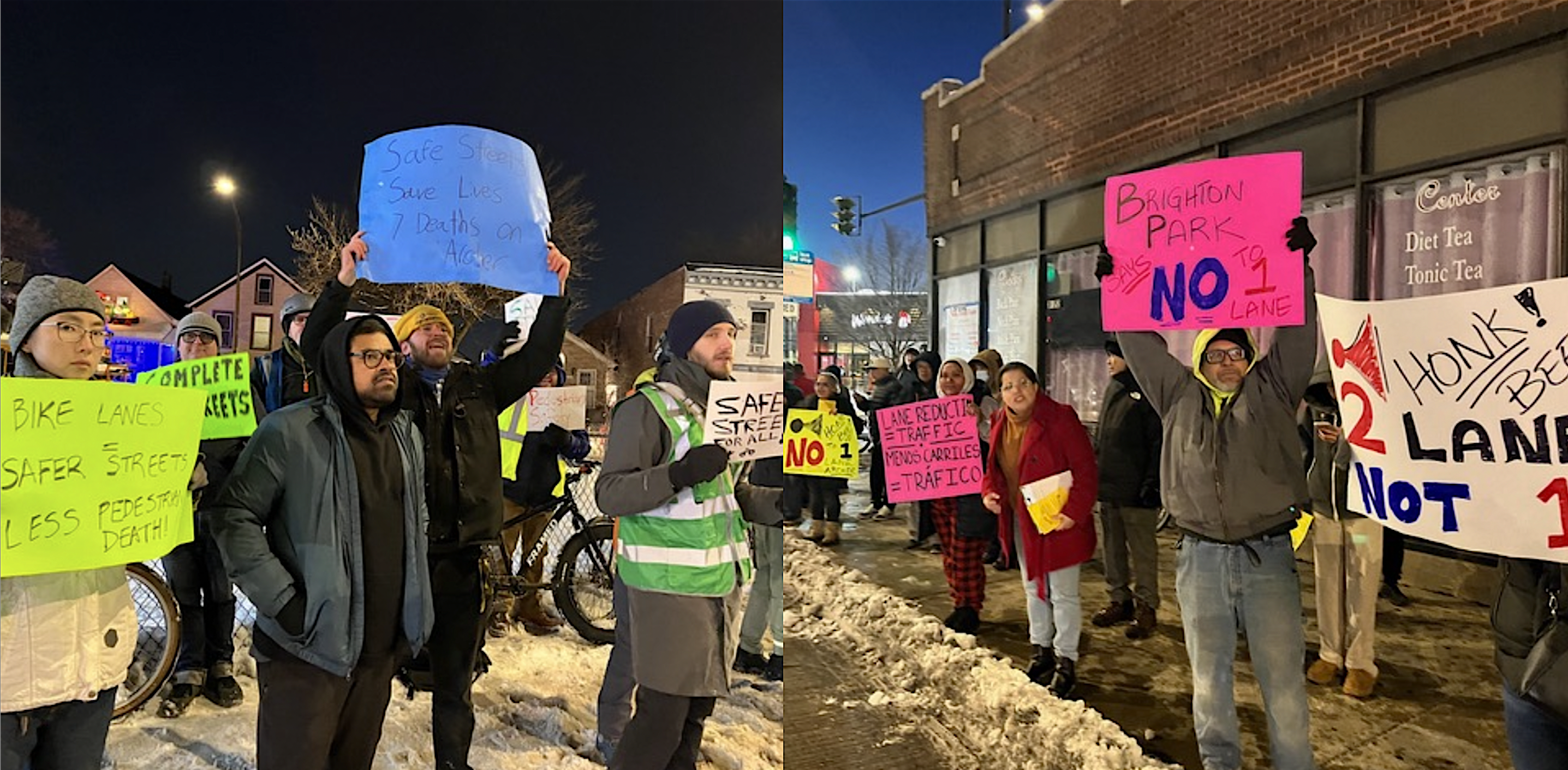This year's second Chicago scooter pilot is in full swing, with up to 10,000 scooters deployed by Bird, Lime, and Spin over most of the city, excluding downtown and the lakefront. Bird says that, judging from its own trip data and "reasonable assumptions" about its competitors' ridership, it's likely the pilot with have racked up a total of 250,000 trips by it's one-month anniversary on September 13. The pilot is scheduled to end in mid-December.
The Twitter account Chicago Scooters was launched last year to cheerlead the city's first scooter pilot during a time when there was a backlash to safety, sidewalk clutter, and vandalism issues associated with the program. (Some of these problems appear to have been solved by this year's "lock-to" requirement, mandating that the devices have built-in locks for securing them to racks or poles.)
Back then Chicago Scooters was run by a scooter fan, who asked to remain anonymous. They have since handed over the Twitter account to a researcher, data science analyst, and transportation advocate. That person, who also requested anonymity, recently test-rode the three brands of scooters and discussed their findings with Streetsblog. The interview has been edited for clarity and length.
Imelda March: Why did you want to test these products?
Chicago Scooters: I am interested in scooters, and I was involved with the 2019 pilot program. I saw the e-scooters up-close and personal. As you know, the pilot program last year had ten participating providers.
Also, recently there has been some drama with cyclists blaming scooters for the lack of bike parking. This year's pilot requires vendors to lock scooters to poles or racks.
I'm a researcher currently taking classes in geographic information system technology. And for the last two years I drove for Uber and Lyft. I've always had an interest in transportation and logistics, and I'm trying to pivot into data science as a career.
IM: How long have you been using the scooters, and which scooters did you try during last year's last pilot?
CS: I tested Lyft, Spin, Lime, Jump, and Bolt during the first pilot. It wasn't easy to test ten companies. This year there are three companies, and I was able to test all three on the same day. The test was not scientific, but I tested all three scooters by covering the same course and under the typical conditions within one day.
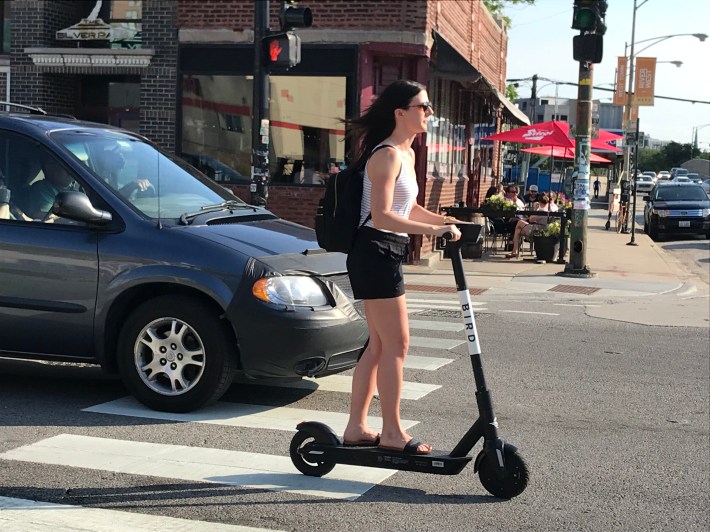
IM: What factors did you consider when rating the scooters?
CS: It isn't straightforward because there are so many factors. If you asked me which one was the best scooter based on rider comfort, I would have to say Spin because their scooter felt smoother. I don't know if this is because they have newer scooters on the roads. The feel of their grips and the suspension is very smooth and stable. While using Lime and Bird, I felt rattles and vibration while traveling over bumps. They didn't feel as safe.
I am very interested in equity, and in that regard, I would commend Lime for offering options for low-income residents. If a user rents a scooter in the city's designated Equity Priority Area, the ride is half-price.
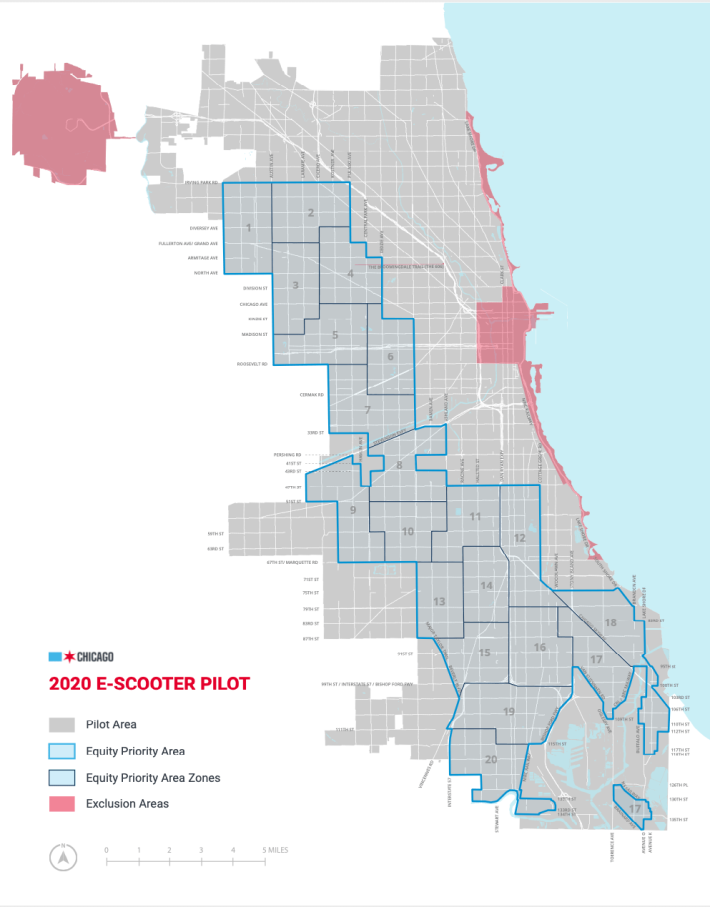
On the flip side, I think the pilot is problematic because it draws this zone, but low-income workers live all around the city. A low-income person who checks out a scooter in the Equity Priority Area might have pay full price on the return home. It is a flawed way of doing equity.
IM: Did you wear a helmet when you tested these scooters?
CS: I did not wear a helmet. I do have helmets at home. I feel comfortable taking the risk. I did look into the helmet situation with the vendors, and Spin had the most generous offer in that they will ship a rider a helmet for free upon request. The other two companies did not offer anything equal.
IM: What makes a scooter stand out over the next vendor?
CS: Scooters should be convenient to pick up. All the scooters got me from point A to point B safely. I use the Transit App because it is one of the few apps that allows a user to see the scooter availability for all three companies on one map.
If I want to get a scooter, it allows me to gauge how near or far away one is. Convenience is what will make or break the pilot program. It seems that most of the scooters are placed along the Milwaukee Avenue corridor; however, the farther west a user goes, the fewer scooters there are. If you live in Portage Park or the Far South Side, it's less likely there will be a scooter available nearby.
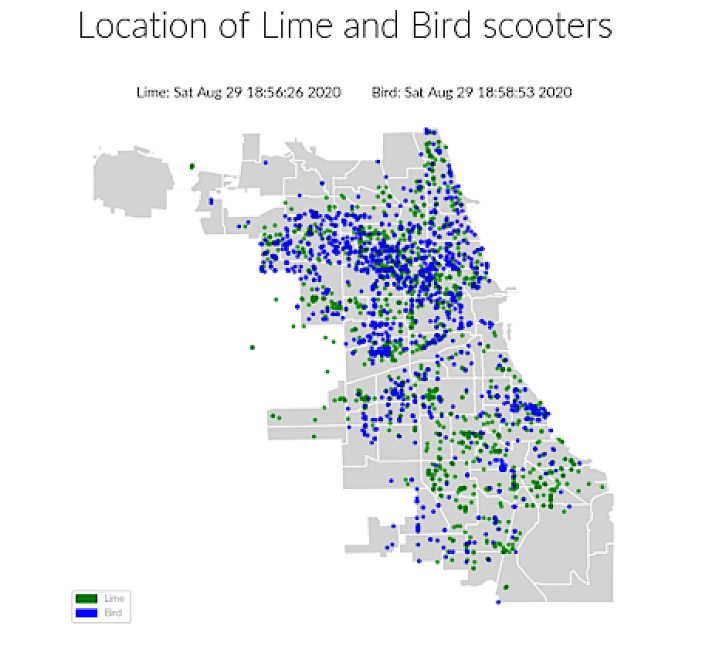
IM: What role should scooter vendors play in helping to fund road repair and other infrastructure?
CS: The hot issue right now on Twitter is bike racks. The bike racks are being overwhelmed with scooters attached to them. That is something the city dropped the ball on, in terms of what is needed to secure the scooters across multiple neighborhoods. I'm not sure what research was conducted to test the number of racks needed for vendors.
At a meeting of City Council's Pedestrian and Traffic Safety Committee, there was a resolution proposed to have the vendors pay for on-street scooter parking corrals. Recharging stations is another idea. Perhaps the companies could offer valet parking service in high-use areas, like Divvy does.
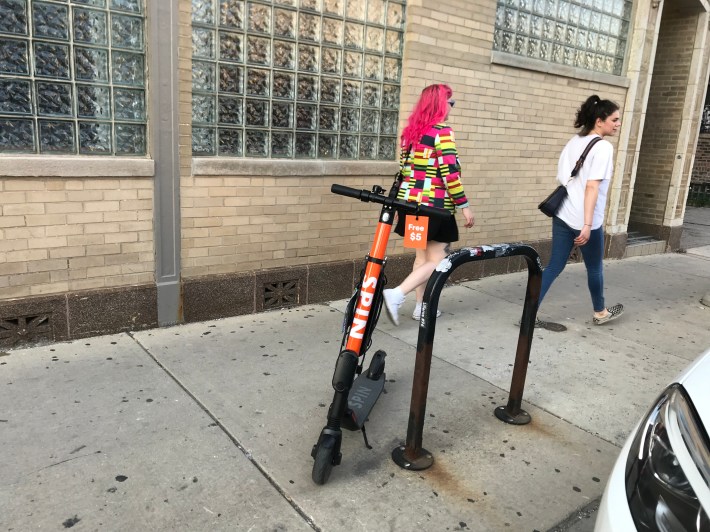
IM: With the scooters, we now have more people using bike lanes. Should scooter vendors be required to help pay for road repair and more protected bike lanes?
CS: I am not an expert in Chicago Department of Transportation budgeting or how they get their monies, but I noticed that there is a 10 percent sales tax for scooter riders. What is that sales tax used for? [The ride-hail tax is being used to fund CTA improvements, as well as filling the city's budget gap. -ED.]
When I was a ride-hail driver, the mayor raised the tax on ride-hail. That became a point of irritation for drivers because I did not benefit from that hike.
I might support the scooter vendors helping with road improvement funds.
IM: How you rate the apps for the different scooter brands?
CS: When I approach a scooter, I want to ride. I established accounts with the three vendors before my test. I didn't encounter any glitches other than being unable to download the Lime safety quiz. I don't know what would happen with a completely new user who may have to download an app and go through the multiple screens to rent the scooter.
Lime's and Bird's unlock procedure uses Bluetooth. Using Bluetooth to unlock is sometimes cumbersome because there is a physical button to push to release the lock. With Spin, it's integrated, and there's no additional step to unlock the scooter.
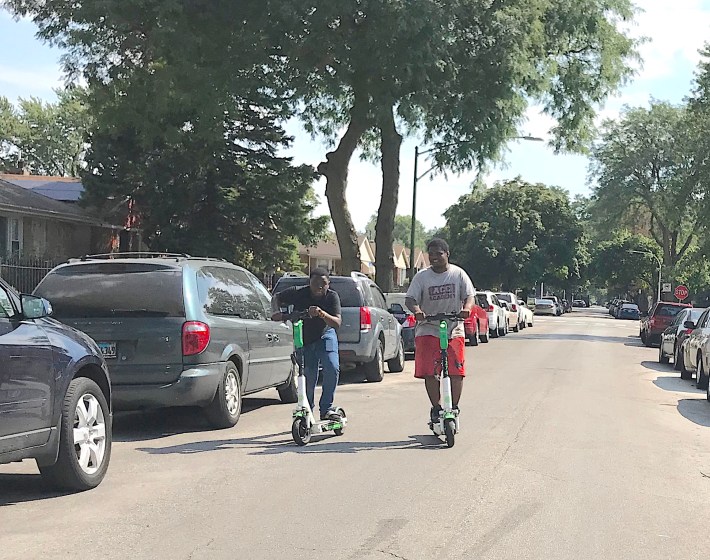
IM: Let's talk more about equity. What should scooter companies be doing do allow more users to access the service?
CS: I would be partnering with community organizations and attempting to give out a few free rides. I know that some of the vendors provided free rides to essential workers.
As far as pricing, the major takeaway from last year is that the scooters are relatively expensive. In 2019, most of the 10 companies charged around 15 cents a minute. This year, the price is 39 cents a minute for Lime and Spin, and 32 cents a minute for Bird. Add in the $1 unlock fee and the 10 percent tax, and a 20 minute ride will run you close to $10. For an essential worker who uses this for a roundtrip job commute, that's $20 a day, on par with calling an Uber or Lyft.
IM: Scooters can be useful for first- and last-mile trips to and from transit stations. Some of the vendors offer lower prices for those who have economic hardships. Bird requires some pre-paid, and that could be a barrier for those on a budget.
CS: Spin pre-authorizes the account beginning at 25 dollars. That could be difficult for someone on a tight budget. And some people's credit cards could be declined if the funds are not there.
It is problematic to have these public-private partnerships. It seems that the city allows the vendors to do whatever they want.
Follow Imelda March on Twitter at @hcram1.
